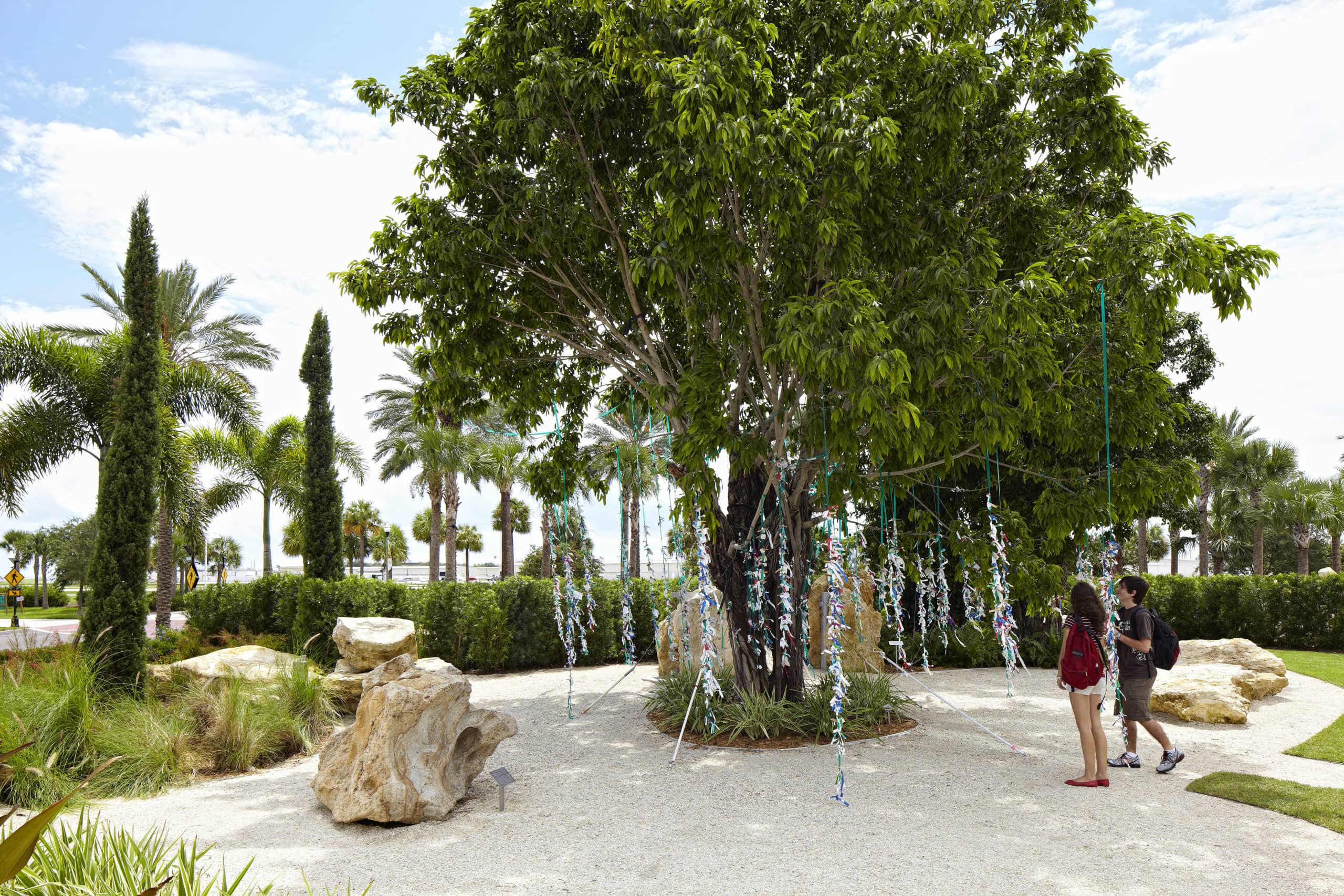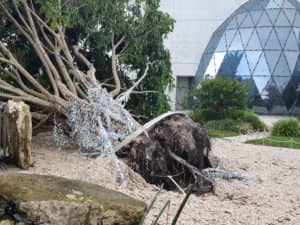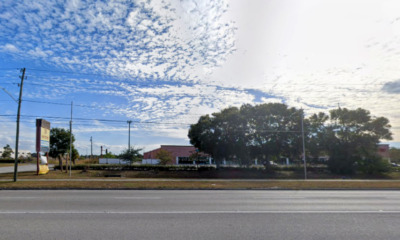Know
Hurricane Ian gets the last wish

Despite the best wishes of thousands of visitors, the Dali Museum’s Wish Tree fell for the last time Wednesday morning.

The Wish Tree, Wednesday, Sept. 28. Photo by Joe Hamilton.
The 35-foot ficus tree, which had been growing in the museum’s “Avant-Garden” since 2011, was a victim of Hurricane Ian’s outer bands, toppling onto its side with its claustrophobic root ball exposed to the elements.
The Dali’s ficus was a rescue from South Florida, where it had been uprooted in 2010 during a storm. An invasive species in Florida, ficus trees are known for their shallow roots, which render them particularly vulnerable to strong winds.
After its re-planting on the east side of the Dali, the tree had fallen on three other occasions, most recently during Hurricane Irma in 2017. Dali maintenance crews then anchored it to the surrounding concrete with cables.
Marketing director Beth Bell said Wednesday that there were indications that the tree’s immediate future was shaky. “Just in the last months, we’ve noticed those anchors showing a little sign of … maybe not holding the tree as well,” she explained.
Now, according to the museum’s executive director Hank Hine, “Insurers have told us it has to go; it can fall on someone.”
Plans were in motion for its removal in October. “But it sounds like Mother Nature came in and decided it was time to go,” said Bell.

After Irma, 2017. Photo: Joe Hamilton.
A new Wish Tree – a different species – will be planted elsewhere in the garden, where the ground, presumably, is more supportive. “I think, she said, “the most important thing to know is that the idea of the Wish Tree lives on.”
Planted in time for the grand opening of the $30 million museum in January, 2011, the tree had already been toppled twice by high winds before its official summertime dedication as a clothespin repository for anonymous written desires.
“It really does, in a way, represent the city,” St. Petersburg Mayor Bill Foster said at the dedication ceremony, Aug. 18, 2011. “It’s got multiple root systems. And to me it symbolizes the great diversity and culture that we have here in the City of St. Petersburg.”
Foster told the audience he had made a wish of his own, “that we become seamless. And that we as a city become prosperous and that we have successes.”
For many years, the museum provided pens and encouraged visitors to scribble on their admission wristbands, then attach them to the colored streamers hanging from tree limbs.
Once the streamers became full, the wishes were collected by Dali volunteers and transcribed into a computer database.
When the Dali re-opened following the initial 2020 wave of Covid-19 closures, the practice had been modified: Admission bands, and wishes, were collected at the exit door, and later attached to the Wish Tree by staffers.

“Wishes from The Dalí Museum Wish Tree,” published in 2021. Photo: Dali Museum.
The missives were still transcribed, and in 2021, with 20,000 anonymous wishes logged, the Dali self-published a book of 250 of them: Wishes from The Dalí Museum Wish Tree.
I wish that I could become my true authentic self.
I wish for cultural sensitivity.
Mom finds her passion and follows it.
Wish my life was like a movie.
For a good night’s sleep.
To live as freely as possible.
I hope Grandpa is fishing in heaven.
The concept of a “wishing tree” is found in many cultures. During Japan’s Tanabata Festival, for example, people celebrate by writing wishes on small pieces of paper and hanging them on a bamboo tree.
In the book’s Introduction, Hine wrote:
We all make casual, spontaneous, private wishes at every turn of our daily interactions. Even more commonly, we wish for outcomes in every action we take. Yet the occasion to ritualize the wish, to adorn it with ceremony, to join with others, marks a heightened enactment of wishing. Such ceremony represents a mechanism to its fulfillment.
The Dali Wish Tree may be down, but it is by no means out.
“I think placing a wish on the Dali Museum’s Wish Tree has really become a beloved feature of the museum,” offered Bell. “I think a museum is a place to reflect. To open minds to new perspectives.
“Particularly one dedicated to Salvador Dali, who constantly pushed perspectives. It’s only natural to offer an opportunity for expressing wishes.”







